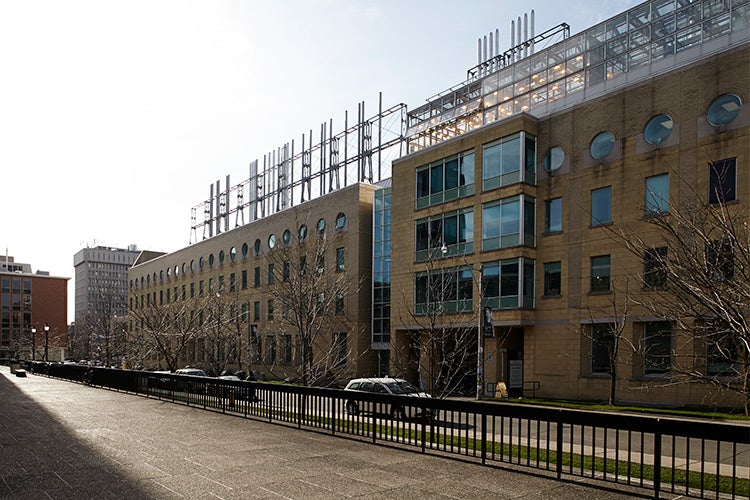As U of T retrofits buildings, researcher studies links between built environment and well-being

Published: February 24, 2022
As the University of Toronto implements energy retrofits to buildings across its three campuses to meet its ambitious greenhouse gas emission reduction targets, one group of researchers will use the opportunity to improve the well-being of students, faculty and staff.
The research project, titled “Wellbeing and The Built Environment: A New Framework for U of T Campus Building Performance Assessment,” will be co-led by Marianne Touchie, an assistant professor in the department of civil and mineral engineering in the Faculty of Applied Science & Engineering, and aims to create a new standard for holistic building performance.
“We want to inform the retrofit process by trying to link specific aspects of the built environment to wellness outcomes of the people living and working in these spaces,” says Touchie. “We plan to do this through pre- and post-retrofit assessments using indoor environmental quality measurements and inhabitant feedback.”
The project is supported by U of T Engineering’s Dean Strategic Fund and includes John Robinson, a professor at the Munk School of Global Affairs & Public Policy and the School of the Environment, Alstan Jakubiec, an assistant professor at the John H. Daniels Faculty of Architecture, Landscape, and Design, and Blake Poland, an associate professor at the Dalla Lana School of Public Health. The researchers will work alongside the facilities teams led by Ron Saporta, U of T’s chief operating officer, property services and sustainability.
The researchers will deploy sensors to measure indoor air quality and temperature, and employ an app that accepts real-time feedback from building inhabitants.
“One aspect of the study that I am really excited about is testing the large-scale use of a technique called Photovoice,” says Touchie. “We will prompt respondents to take photos of aspects of the campus-built environment that add to or detract from their well-being.”
Not only will the project assess environmental and economic benchmarks, but it also intends to measure the impact of these retrofits on people working and living in these buildings.
“This is a complex topic with many distinct aspects of the individual, the space, the building and the broader community all impacting how the inhabitant feels,” says Touchie. “Previous research has tended to focus on thermal comfort, visual comfort or indoor air quality independently, and what we are really trying to do is to bring all those elements together into a common framework.”

The Earth Sciences Centre, as seen from Huron Street, is among the locations on campus that researchers intend to study (photo by Chris Thomaidis)
Touchie and her collaborators will be developing the assessment approaches this year and plan to begin pre-retrofit evaluations in early 2023. They hope the project will contribute to the growing body of knowledge on how aspects of the built environment influence people’s well-being, and that the assessment methods they develop can be integrated into U of T’s building retrofit process.
“While these retrofits are designed to reduce greenhouse gas emissions to mitigate climate change and reach U of T’s climate-positive-by-2050 goal, through this project we are hoping to find ways to leverage these retrofits to also be ‘people positive’ by retrofitting spaces to improve comfort, productivity, health for students, staff and faculty,” Touchie says.



